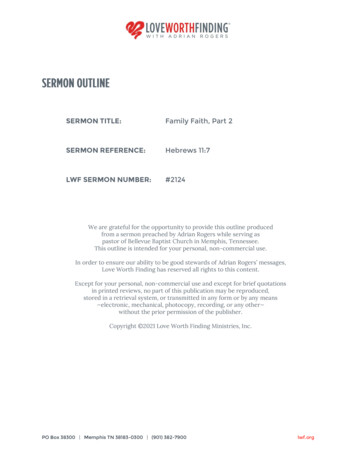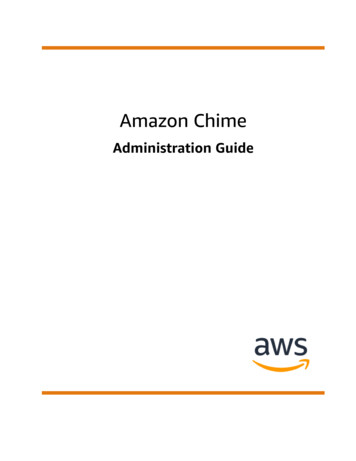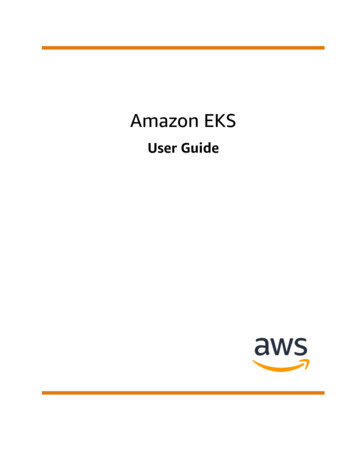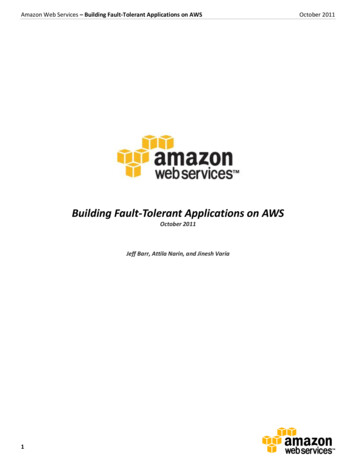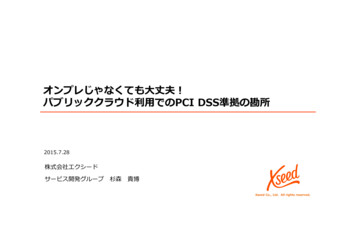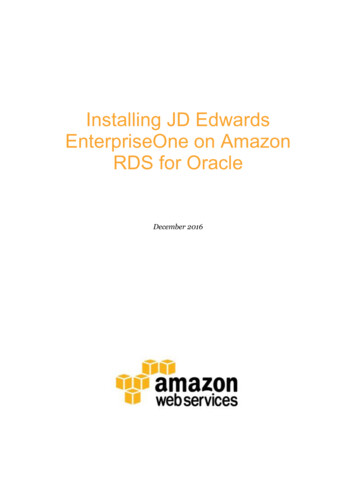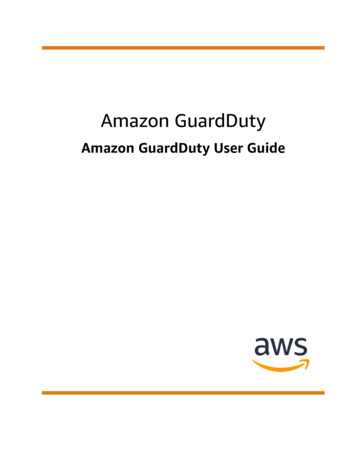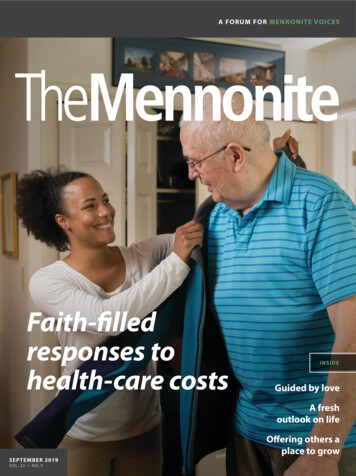
Transcription
A FO RUM FO R M EN N O N I TE VOI C E SFaith-filledresponses tohealth-care costsINSIDEGuided by loveA freshoutlook on lifeOffering others aplace to growS EP TE M BE R 2019VO L. 22 NO. 9
S E P TE M B E R 2019VOL. 22 NO. 9060929F EAT U R ESDE PAR TM E N TS10Guided by love04LettersAnne Blackwood06News BriefsLove and empathy08MiscellanyTimothy McMahan King09Congregational SnapshotA fresh outlook on life28NewsMorgan New Voices34Leadership Field Notes35Grace and Truth36For the Record38Classifieds39Global Anabaptism40Editorial141821Healing in communityEvan Beck24Learning takes time andcommunityKristin TroyerO N THE COV ER: Photo courtesy of Landis CommunitiesTHEMENNONITE.ORG SEPTEMBER 20193
SUBTITLESTAFFExecutive director:Sheldon C. GoodEditor:Gordon Housereditor@themennonite.orgSubscriptions:Rebecca Helmuth800.790.2498Editorial assistant:Nora MillerDesign:Hannah Gerig MeyerEditor emeritus:Everett J. ThomasAntioppression consultants:unlock Ngenuity, LLCOFFICESLettersThis publication welcomes your letters,either about our content or aboutissues facing Mennonite Church USA.Please keep your letter brief—oneor two paragraphs—and about onesubject only. We reserve the right toedit for length and clarity. Publicationis also subject to space limitations.Email to letters@themennonite.orgor mail to Letters, The Mennonite,3145 Benham Ave., Suite 4, Elkhart,IN 46517. Please include your nameand address. We will not print letterssent anonymously, though we maywithhold names at our discretion.Lansdale, Pa.574.343.1332 (Sheldon)718 N. Main St.Newton, KS 67114-1703316.281.4398 (Gordon)POSTMASTERSend address corrections to:3145 Benham Ave., Suite 4Elkhart, IN 46517The Mennonite is the publicationof Mennonite Church USA, whichestablished three purposes for themagazine: to provide a forum for thevoices within the denomination, topromote the ministries of MennoniteChurch USA and to offer an editorialvoice distinct from but collaborativewith other leadership voices. TheMennonite (ISSN 1522-7766) ispublished on the first Tuesday of eachmonth by the board for The Mennonite,Inc. Periodicals postage paid at Elkhart,IN 46517 and at additional mailingoffices. Subscription rates for oneyear: 46 to U.S. addresses and 54USD to Canadian addresses. Grouprates available. The views expressedin this publication do not necessarilyrepresent the official positions ofMennonite Church USA, The Mennonite,or the board for The Mennonite, Inc.Scripture references are from theNew Revised Standard Version unlessotherwise noted.4Mennonites undefinableMennonites have become almostundefinable—one group going oneway, others going in various directions.Bottom line, there is no really reliableway to describe Mennonites withoutconfusing whoever you may be tryingto explain to who Mennonites are.In reading Christianity Today, oneseldom if ever reads anything bysomeone identified as Mennonite. Asto biblical beliefs held by Mennonitesin earlier days, one could count onparticular long-held doctrines. Theidentity wasn’t so difficult; there wereOld Order Mennonites, the MennoniteChurch and the General ConferenceMennonite Church. It wasn’t toodifficult to understand the stance ofthese three groups. In different parts ofthe country one could observe somevariation of practice, but doctrine wasnot so different.My parents took me to what wasthen a Mennonite church withoutemphasis on Mennonite, though thechurch was Mennonite for over 250years. It now has a different name, withattendance among younger peoplegrowing rapidly, but the pastor isDallas Theological Seminary-trained,and there is no viable emphasis onbeing Mennonite, though it mustbe said there is no “anti-Mennonite”spirit among the leaders or thecongregation. It just isn’t an issue; forall practical purposes the church isindependent but without an emphasison “being independent.”—Eugene Witmer,Lititz, Pa.Rethinking MCCAs parents of a Mennonite CentralCommittee worker in Southeast Asia,we are responding to the suggestionthat we “rethink” MCC as MEDA andMDS are serving in these needed areas(Richard Penner’s letter “RethinkingMCC,” August).MCC’s roots may have begun in “shortrange emergency categories,” but itnow has many long-range programs.Our daughter and her family serve ina capital city that has an office and anoffice manager who has been there30 years. They are researching AgentOrange’s effects in this country andhow to answer the atrocities thatoccurred in Vietnam but drifted intobordering countries. They are alsoworking on peace and justice issueswith the justice department of thegovernment there. Their work (armedwith a law degree and a heart forpeace and justice issues) is having aprofound effect. They build and standon the shoulders of the years of workthat preceded them. MCC is a strongforce for the plethora of programs thatfill needs of our denomination, whichserves around the world.—Ed and Edie Bontrager,Harrisonburg, Va.Where is home?In response to “Where Is Home?” (www.themennonite.org) by Regina ShandsStoltzfus: Sadly, it was Karl Marx whohelped me understand how professingChristians could support slavery. Inhis model, the economic structure ofsociety determines all else, includingrace relations, ideology, religion,marriage, education, law and morality.While I think he overstated the case, Ialso think there is no denying we arestrongly inclined to defend the systemthat butters our daily bread.It’s not a coincidence the abolitionistmovement started in the North
LE T TERSR E ADE R S’ P O L LIn the pastyear, myhealth-carecosts40.6%have gone up0%have gone down46.9%have stayed about the same12.5%are beyond my ability to payamong people, largely Christian, whohad never become economicallydependent on slavery. The ferventsupporters of slavery in the Southwere those who saw themselves andtheir society as “needing to keep”slavery. The “Southern way of life” wasinextricably tied to slavery, no matterhow many today deny that.I just had a talk with my granddaughterabout all this killing, hate crimes,disappearance of indigenous youngwomen, and racism. We’re NativeAmericans (Navajo). All this doesn’t gopast us. Her question was, Why?—Ernestine H. Begay,FacebookTotal number of responses: 32Look for the nextpoll question on TheMennonite’s Facebookand Twitter pages.—Mike Yoder,FacebookI N T H IS ISSU EWhat keeps you going?Love, faith, family and dear friends.—Nancy Donta,FacebookCoffee, my family, and sheerstubbornness.—Mike Gierhart,FacebookRosie and Gemma, my beloved pups.—Diann Bailey,FacebookOur U.S. health-care system continues to drive up costs, and we ask, What arefaith-filled responses to this system?Anne Blackwood (page 10) writes that God’s love should be our guide aswe care for others. Timothy McMahan King (page 14) writes from his ownexperience with addiction and argues that treatment, rather than incarceration,is a better approach to this growing problem. Morgan Redding (page 18)describes a program that helps seniors meet their health-care needs in theirown homes. Evan Beck (page 21) relates his experience with two healthcare systems and concludes that the U.S. one does not reflect Jesus’ healingpractices. Kristin Troyer (page 24) describes how a Mennonite family navigatestheir young son’s diabetes.—EditorTHEMENNONITE.ORG SEPTEMBER 20195
NE WS BRIEFSNews Briefsdonations per kilometer of the walk,with all donations going directly tosupport IBA.CO M P I L E D BYIBA is an adult educational programthat provides Spanish-languagebiblical and theological training formembers and leaders of Hispaniccongregations within MennoniteChurch USA and beyond. Theprogram was founded in 1988 andoperates 42 active learning centersin congregations across the country,where volunteers serve as the teachers.Students receive a theologicalstudies certificate or diploma uponcompletion.GOR D ON H OUS E RGüete to walk the Caminode Santiago in supportof Instituto BiblicoAnabautistaThe Camino de Santiago is an ancientnetwork of paths that people havewalked since the 9th century inpilgrimage toward the tomb of St.James (Santiago in Spanish). “Atpresent, many Christians of differentcreeds travel the road, rememberingthat we are pilgrims in the worldcreated by God,” Güete says.MCC photo/Jill SteinmetzMarco Güete, director of Hispanicministries for pastoral and leadershipeducation at Mennonite EducationAgency, plans to walk 260 kilometers(162 miles) of the Camino de SantiagoSept. 11-25 to raise funds for InstitutoBiblico Anabautista (Anabaptist BibleInstitute). Güete, a founder of IBA,will begin at St. Jean Pied de Port inthe South of France and walk to hisdestination of Burgos, Spain, overthe course of 16 days. MEA invitesLeaving the city dump for schoolWendy Carolina Hernández Enríquez stands in front of her home inTegucigalpa, Honduras, below the city dump where she works. She movedhere years ago after she left her abusive husband. Her four youngestchildren study at Amor, Fe y Esperanza school. The people living in theseneighborhoods work hard, long hours sorting the city’s garbage every day,collecting glass and plastic to earn meager incomes of less than 20 eachweek. But in the midst of such desperation, more than 100 children whoused to work with their parents in the dump now walk away from it to go to aMennonite Central Committee-supported school.—MCC6SEPTEMBER 2019 THEMENNONITE.ORGAccording to statistics from Santiagode Compostela, only 17% of the morethan 327,000 walkers who annuallywalk this route are over 60 years old.Güete is 68.To contribute in support of IBA, visitMEA’s donation page and selectHispanic Ministries (IBA/SeBAH) or maildonations to Mennonite EducationAgency, 3145 Benham Ave. Suite 2,Elkhart, IN 46517 and note that it is for“Walking the Camino.”—Mennonite Church USASalem-Zion MennoniteChurch youth plan to#BRINGTHEPEACE to thecounty fairAs thousands visited the TurnerCounty Fair in South Dakota in Augustto attend events like the demolitionderby, rodeo and roping contests, theyfound the message #BRINGTHEPEACEat a concession stand. The youthgroup of Salem-Zion MennoniteChurch in Freeman, S.D., runs thegrandstand concessions as its annualfund-raiser, and this year they wore#BRINGTHEPEACE T-shirts in support ofMennonite Central Committee’s (MCC)asylum and immigrant detainment kitefforts.Austin Unruh served as a youthsponsor for the four youth Salem-ZionMennonite sent to the MennoniteChurch USA convention in July, andhe returned home inspired to createthese shirts as “a small, easy way toshow your commitment to the peaceof Christ and our calling to spread thelove and peace of Christ.” The shirtsare available online (bonfire.com/bringthepeace) with proceeds goingto MCC’s efforts to support immigrantdetainees at the Southern Border.—Mennonite Church USABridgefolk gatheringfocuses on Indigenoussettler reconciliationThe 18th annual Bridgefolk Conferencetook place July 25-28 at CanadianMennonite University in Winnipeg,
NE WS BRIEFSManitoba. The theme was “Towarda Just Peace: Indigenous-SettlerReconciliation through Friendship.”Sister Eva Solomon, an Ojibwe elderwho is a member the Sisters of SaintJoseph of Sault Ste. Marie, Minn., andSteve Heinrichs, director of IndigenousSettler Relations for MennoniteChurch Canada, gave the two keynotepresentations. Sister Eva, who hasdevoted her ministry to developingways of incorporating aboriginal ritesand customs in Catholic worship, ledthe participants in several inculturatedceremonies during the course of theconference.Bridgefolk is a movement ofMennonites and Catholics committedto celebrating and honoring the bondthat they share as brothers and sistersin Christ. This year’s conference wasthe second in a three-year series ofBridgefolk conferences exploring thecall to Just Peace, a new framework toencourage all Christians to embraceactive non-violence and justice.—BridgefolkWestern DistrictConference hearstestimonies and welcomesa churchAt its annual assembly July 26-27in North Newton, Kansas, WesternDistrict Conference focused on beingwitnesses, hearing testimonies fromcongregations and welcoming acongregation into its membership.Under the theme “We Are Witnesses,”participants heard a testimony atthe opening worship on July 26 fromSandra Luz Montes-Martinez. Shegave thanks for a Mustard Seed grantfrom the Resource Commission ofPeter AndersonThe cochairs of Bridgefolk, MarilynStahl, a member of Seattle MennoniteChurch, and John Klassen, Abbot of theBenedictine monastery of Saint John’sin Collegeville, Minn., acknowledgedthat the conference was being heldin Treaty 1 territory on land that is thetraditional terrain of the Anishinaabe,Cree, Oji-Cree, Dakota and DenePeoples, as well as the homeland of theMétis Nation.Memories of the Trail of DeathT rail of Death 2019 pilgrims pray as they read the 600-plus names ofPotawatomi people who died in the first decade following their arrival atthe government-allocated land at St. Philippine Duchesne Memorial Park inLinn County, Kan. Ben Parker Sutter is seated, and Mara Weaver Boshart isstanding.—Mennonite Mission NetworkWDC, which her congregation, IglesiaMenonita Monte Horeb in Dallas, Texas,used for a health initiative on diabetesprevention in the Hispanic communitythere.In his sermon, MC USA executivedirector Glen Guyton shared his storyof coming to the Mennonite churchafter serving in the U.S. Air Force. Hesaid he joined the Air Force as “a way toget out, to get an education.”Through Bishop Leslie Francisco III,pastor of Calvary Community Churchin Hampton, Va., Guyton met TitusPeachey, who taught him aboutAnabaptism and the theology of peace.“If Titus had not been open to me,”Guyton said, “if he had worried moreabout being pure, I would not be whoI am today.”On July 27, Moises Romero, pastor ofIglesia Camino de Santidad in Liberal,Kansas, spoke about the importantpeople to him in helping plant thiscongregation. Later in the day, WDCdelegates unanimously welcomed thecongregation as a new member.In his second sermon, Guyton said helikes the theme “We are witnesses,”especially “we are.” As our family offaith grows, he said, things get messy,and we need to accept people as theyare. We are attracting people who don’tknow all the rules, “like which pewbelongs to grandma.”He read from Ephesians 2:13-18 andnoted that Christ moves the churchbeyond a place of rules and regulationsto bring us together. “Rules areimportant,” he said, “but they are thereto help serve the church, and whenthey don’t, we need something new.”We need to recognize our role aswitnesses, he said. We live in a worldwhere people who are seeking asylumare abused. He worries about his son,who is entering a time when he isseven times more likely to be a victimof homicide simply because he isAfrican American. “This is a time ripefor the message of peace.”—Gordon Houser for TMailRead longer versions ofthese and other articles atthemennonite.org.THEMENNONITE.ORG SEPTEMBER 20197
MISCELLANYMiscellanyCO M P I L E D BYGOR D ON H OUS E RClimate change is an economicstory and a public health story;global warming shapes supplychains, water resources, techinfrastructure, communitydevelopment and loss, and onand on. Yet climate coverage hashistorically been relegated to thescience and environmental beats,outside the realm of hard news.—Rosalind Donald forColumbian Journalism ReviewEaster giftPathway Church in Wichita, Kan., usedthe money it ordinarily would havespent promoting its Easter servicethrough mailings and TV ads to helpfamilies pay off their medical debts.Each of the 1,600 families who hadtheir debt liquidated received a note:“We’re Pathway Church, we may nevermeet you. But as an act of kindnessin the name of Jesus Christ your debthas been forgiven.” Using RIP Medical,an organization that abolishes debtby buying it at pennies on the dollar,the church’s investment of 22,000alleviated 2.2 million in debt.—Christian Century8SEPTEMBER 2019 THEMENNONITE.ORG4x 6xGreenland is melting fourtimes faster than previouslythought, and Antarctica islosing six times as much iceannually as it did 40 years ago.—Sierra50%A new Gallup report found that onlyhalf of Americans say they belongto a church or other religious body,down from 69% 20 years earlier. Mostof the decline is tied to the rise of the“nones”—those who claim no religiousaffiliation. Gallup found that the shareof Americans who claim a religiousidentity declined from 90% to 77%.But even those who claim a faithtradition may not belong to a religiouscongregation or community, accordingto the report, which compared datafrom 1998-2000 to data from 20162018. At the turn of the 21st century,Gallup said, 73% of religious Americansbelonged to a house of worship. That’sdropped to 64% today.—Religion News Service300 tonsThe training of an A.I. (artificialintelligence) can produce more than300 tons of CO2.—Harper’sGreatest hymn of all time“Holy, Holy, Holy!” has been chosenin a March Madness-like tournamentas “the greatest hymn of all time.” TheHymn Society in the United Statesand Canada announced the winneron July 18, the last day of its annualconference in Dallas, Texas. More than800 people, mostly members of the1,200-member Hymn Society, votedon the society’s website, on Facebookand, in the last rounds, in person at theconference during the competitionthat featured brackets similar to thespringtime NCAA basketball tradition.—Religion News ServiceFactor by which more Americansdied in school shootings than incombat last year:3—Harper’sAverage number of years thewealthiest 1% of Americans outlive thepoorest 1%:10 to 15—Yes! MagazineAverage amount, in additional benefitsfrom Social Security and other socialprograms, that an affluent Americanreceives from that life expectancyinequality: 130,000—Yes! Magazine
CONGREGATIONAL SNAPSHOTShalomMennonite ChurchIndianapolis1.Members of the Mara Christian Church joined Shalommembers in a work day this spring to beautify thegrounds. Photo by Laura Harms2.Shalom and Iglesia Amigos (a Quaker church held inSpanish in Shalom’s building) invited neighbors toenjoy an Easter Egg Hunt in April. Photo by Laura Harms3.Front, from left, Grace Rhine and Rod Maust, andback, from left, Linda Showalter, Sam Bixler, CarlRhine, Mike Wigginton, Peter Wigginton and JimShowalter lead the congregation in song.Photo by Frank Kandel4.Chuck Dunn leads the Food and Faith Sunday schoolclass from his time at Paoli Mennonite.Photo by Laura Harms5.Brian Bither, Solomon Abebe and Linda Showaltertalk with guests from the neighborhood at the annualfall festival. Photo by Frank Kandel12345THEMENNONITE.ORG SEPTEMBER 20199
SUBTITLEBYAN N E B L ACK WO O DGUIDEDBYloveAnne Blackwood at work. Photo by Scott Byram10SEPTEMBER 2019 THEMENNONITE.ORG
Making God’slove practical inhealth careBeloved, let us love oneanother, because love isfrom God; everyone wholoves is born of God and knowsGod. Whoever does not love, doesnot know God, for God is love.—1 John 4:7-8Love must be at the centerof a faith-based response to anysocial issue. This is what Jesusmeant when he said all that Godexpressed through “the law andthe prophets” hangs on love ofGod, self and neighbor (Matthew22:40).According to 1 John, lovegrows out of our awareness ofGod’s unqualified love for us. Johnexpresses God’s love in terms ofJesus’ willingness to die. Whetherin death (as in Jesus’ case) or inlife, God loves first—consistently,patiently, perfectly. As weexperience and appreciate beingloved, we respond with love forGod, whom we have not seen, andfor our sisters and brothers, manyof whom we have seen. When wepay attention, within and beyondour usual circles, we can bringthese brothers and sisters intosharper focus, perceiving themwith love, as God does.Who, then, are God’s belovedin the health-care system? Beingbound by a body is one of thegreat democratizing attributesof being human, being created,being God’s beloved. At somepoint between birth and death,every human has some experiencethat could benefit from medical,nursing, nutrition, counseling orother health-care service.Under the best ofcircumstances, expectantmothers receive obstetric care,children receive regular pediatriccare, a burst appendix receivesemergency surgery. In middleage, as blood vessels, metabolicprocesses, immune systems orthe fidelity with which our cellsturn over demonstrate that allthings change with time, weexpect a doctor, nurse, socialworker, appropriate medicationand eventually hospice will beavailable to assist us. We expectthese things even, or especially,for more severe illnesses, or whenan accident or illness occurs “toosoon.” These expectations areconsistent with our being belovedchildren (creatures) of the lovingGod (Creator).This “best of circumstances”appears to be the reality formost of us. But these are notassumptions 14% of Americanscan make. These 28 millionpeople are no less beloved.According to the CommonwealthFund, in 2016, almost one-thirdof those with health insurancehad plans with high deductiblesand out-of-pocket expensescompared with their income.Among these “underinsured,”almost half reported medical debtproblems. Even among thosewith “adequate” health insurance,25% reported difficulty with theirmedical bills.As a juvenile diabetic, Iadvocate with my insuranceevery month about coverage forTHEMENNONITE.ORG SEPTEMBER 201911
insulin pens, pump supplies andmore. At a minimum, this istime consuming and taxing. Asa physician, I can afford highpremiums for a comprehensiveplan and know who to call toget these needs covered. Yet myexperience underscores the realitythat necessary health care isuncomfortably close to being outof reach for all of us.Necessaryhealth care isuncomfortablyclose to being out ofreach for all of us.Many factors drive healthcare costs. Innovation is one.It is expensive to develop andimprove on antibiotics, canceror heart-disease drugs, vaccinesand devices to diagnose, treatand manage many conditions.In addition, U.S. consumers paymore for medical innovation thando people in other countries,even wealthy countries. In theUnited States, we assume thatlimiting regulation facilitatesprogress. Unfortunately, whenunregulated: (1) drug developersrequire U.S. consumers to paymore for advances from whichworldwide patients benefit; (2) lessscrupulous developers encourageunnecessary and thus harmfulprescriptions, as we see in theopioid crisis; (3) health systemsdevelop monopolies; and (4)insurance companies maintainprofits, while patients sometimespurchase policies with out-ofpocket costs that are too high toprotect them.Uninsured patients alsoincrease costs. In a system wheresome can’t afford to pay for care:12(1) lower-cost, more effectivepreventive care is not delivered;(2) more severe, less treatableconditions cost patients andsociety more; and (3) those withcomprehensive coverage end uppaying inflated expenses thatcover some of the costs for thosewho cannot pay. The alternativesto inflated costs are either thatthose without insurance areturned away or that hospitals closeand accessibility is reduced foreveryone. We overvalue high-costspecialty care, while as a societywe fail to vaccinate children orprovide broad access to provenhealth screening and preventiveservices. Finally, those for whomhealth-care access is most limitedare the same beloved ones forwhom basic needs consistentlygo unmet—those in rural areasor inner cities, people of color.Market factors do not and cannotfacilitate equity.As God’s beloved, our values,advocacy and creativity shouldmove us to bring change, areorientation of priorities andbalance. We are to “seek peaceand pursue it” (Psalm 34: 14) andare called by Jesus to be salt.Anabaptists have a history ofacting boldly and compassionately,even when facing complexsystems. We have been changemakers, including providinghealth insurance in our owncommunities, and modernizingmental health services throughthe faithful efforts of Anabaptistconscientious objectors, whorequested socially significant workfor their Civilian Public Serviceand eventually established andbecame aides in governmentmental-health units. Theseordinary men and women not onlyresisted war but gravitated towardthese positions, which paid lessthan other civilian wartime jobs.SEPTEMBER 2019 THEMENNONITE.ORGThey resisted and reformed theinhumane mental-health practicesthey witnessed in governmenthospitals during World WarII, wrote letters to newspapersabout the harsh conditions,continued their advocacy afterthe war, established their ownmental-health hospitals andimpacted mental-health practicesnationwide. These actions lived upto the highest ideals of what weare called to be as beloved ones, asthose who act with mercy, justiceand compassion among God’sbeloved.Today, we are called to besimilarly creative and bold, guidedby love, with a view toward equity.Many of us do this in our chosenprofessions. As people of God,we must ask, How do we educateourselves about the health-caresystem, who is left out andwhy? How does this impact ourvolunteer efforts? Our pro bonoofferings? How does this impactour votes? What do we need toknow about candidates’ policieson the Affordable Care Act,Medicaid expansion, Medicare forall? How do we advocate? Whowrites letters and to whom? Whoare the policy makers among us?Who are our visionaries? Ourallies? Our potential allies? Howdo we amplify the voices thatinspire and multiply the actionsthat make God’s love practical,even in this arena?This is God’s work of love.Beloved, this is the life we arecalled into.Anne ByramBlackwood is amember of FirstMennonite Churchof San Francisco, amedical oncologistand a spiritualdirector.
THEMENNONITE.ORG SEPTEMBER 201913
BYT I M OTHY M CM AHAN KIN GLOVE&EMPATHYPhoto provided by the author14SEPTEMBER 2019 THEMENNONITE.ORG
Treatment, not incarceration,helps those with addictionand saves costsIsat in my doctor’s officenearly 10 years ago,waiting for an update onmy progress. I had spent weeksin the ICU and months in thehospital after what shouldhave been a routine procedurecaused acute necrotizingpancreatitis. I had been homefor a few months and wasvisited twice a week by anurse. Unable to eat, I receivedall my nutrition through asemipermanent IV line in myarm.Insurance paperwork camethrough detailing the total cost ofmy care. I was lucky to only paya few hundred dollars in copaysfor what came to hundreds ofthousands of dollars in care. Just anight in the ICU was more than IJust a night in theICU was more than Ipaid for a month inrent.paid for a month in rent.The update my doctor gave wasmixed. My blood levels indicatedthat my pancreas was healing.Still, I was unable to eat evenwhite rice and broth without pain,nausea and vomiting. And even asmy numbers were improving, mydoctor noted that I was runningthrough my prescriptions for painmedicine faster than before.He told me that I had gastricparesis, a condition in whichthe high levels of opiates I wastaking had, in effect, paralyzedmy digestive system makingit impossible for me to resumeeating foods. And, in a crueltwist, the length of time I hadbeen on the narcotics and theheavy dosages were actuallymaking me more sensitive to pain.I had developed anotherpotentially deadly but notuncommon condition; I wasaddicted to my pain medicine. Myusage had moved from slow andconsistent with the doctor’s ordersto a compulsive consumption I feltwas increasingly out of my control.Three times previously, Ihad been harshly confrontedby doctors who believed I hadbeen faking my pain in order toget more narcotics. Each timeit turned out they had missed acomplication that was the sourceof the pain at great cost to myhealth and risk to my life.But my doctor didn’t treat melike I was a criminal. He didn’tstart with blame or judgment.Instead, he talked to me withempathy and compassion. Heknew that the most effectiveframework to address what washappening was through a medicaland public health lens.Tragically, our country’s frontline of addressing addiction hasbeen and continues to be one ofpunishment and incarceration. Inthe early 1980s, there were only50,000 people behind bars fordrug related charges; today thereare nearly 500,000.Awareness has grown aboutthe importance of a public healthapproach, but as the death toll ofoverdoses hit over 70,000 peoplelast year, there is a long way to go.And the fundamental injusticeremains that the options fortreatment instead of incarcerationare available to and offeredprimarily to white people, anddramatic racial discrepanciespersist.Addiction is by its definition aself-harming behavior. The beliefthat escalating the harm, painand punishment involved willsomehow bring a resolution orrecovery is wrong. Very wrong.A study of more than 1,300injecting drug users in Baltimorefrom 1988 to 2000 looked at thisproblem. Researchers examineddemographic factors, drug-usepatterns and even whether theTHEMENNONITE.ORG SEPTEMBER 201915
person sought drug treatment. Theauthors write, “Of great interest isthat only a history of incarcerationdifferentiated persons whosuccessfully stopped using drugsfrom those who continued to useinjection drugs over a 12-yearperiod.” This bears repeating. Theonly factor that distinguishedthose who successfully stoppedusing drugs from those whocontinued to use was this: ThoseADDIC TION NATION:WHAT THE OPIOIDCRISIS RE VEALSABOUT USby Timothy McMahan King(Herald Press)This excellent book exploresthe complexity of addictionfrom many angles. King writesout of his own experience ofaddiction to opioids but delvesmuch deeper into what thecurrent opioid crisis says aboutus and our culture, our history,our politics, our economy,our materialism. The crisis, hewrites, “is about the failuresof religion and of an anemicspirituality that we have notwanted to face.” The problem,he says, is not out there butwithin each of us. Among themany writers he draws on isGerald May, who writes, “Tobe alive is to be addicted, andto be alive and addicted is tostand
Dallas Theological Seminary-trained, and there is no viable emphasis on being Mennonite, though it must be said there is no "anti-Mennonite" spirit among the leaders or the congregation. It just isn't an issue; for all practical purposes the church is independent but without an emphasis on "being independent." —Eugene Witmer,

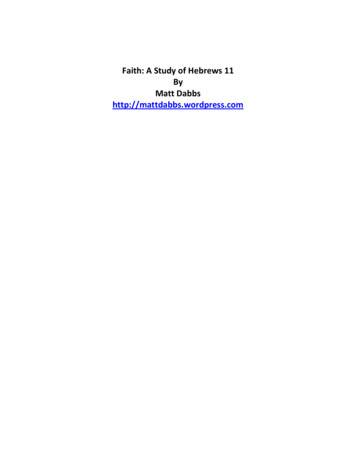
![Index [beckassets.blob.core.windows ]](/img/66/30639857-1119689333-14.jpg)

